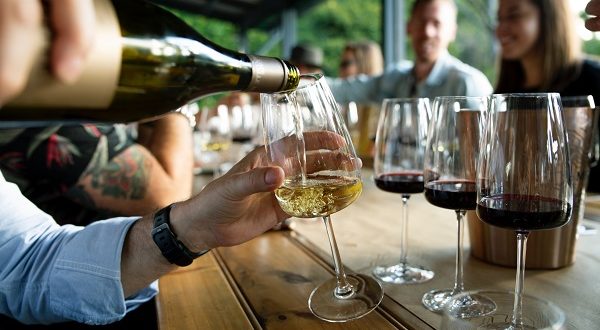
The festive season has arrived, as have days of summer sunshine and long lunches with favourite wines. But with no-drink, no-drive the best policy, and many of us choosing to limit our intake of alcohol, it can be difficult to know just how to successfully store those half-empty bottles of vino before they turn to vinegar. And as for serving wine at the right temperature when you’re in a bach or camper – here’s how to avoid complaints!
How to store an opened bottle of wine once you’ve poured from it.
 It’s entirely possible to store opened wine, but not forever, and only if you know what you’re doing. The problem with an opened bottle of wine that has been poured from, is that the remainder of the wine inside it begins to oxidise. Oxidation is a common chemical process which sees the alcohol in the wine react with the oxygen in the bottle to form a nasty-tasting chemical called acetaldehyde. It follows, therefore, that the more air you can exclude from the opened bottle, the better.
It’s entirely possible to store opened wine, but not forever, and only if you know what you’re doing. The problem with an opened bottle of wine that has been poured from, is that the remainder of the wine inside it begins to oxidise. Oxidation is a common chemical process which sees the alcohol in the wine react with the oxygen in the bottle to form a nasty-tasting chemical called acetaldehyde. It follows, therefore, that the more air you can exclude from the opened bottle, the better.
Some people use a specially designed vacuum pump for the job while others decant the left-over wine from the wine bottle into a smaller, sealing bottle which is only just big enough to hold the liquid (this means there’s very little air left at the top of the bottle). But there are other tricks to slowing down oxidation, too. The most basic is to recap or recork the bottle every time you finish pouring from it. When you’ve finished with the bottle for the day (or evening), pop it into the fridge because cooler temperatures slow down the rate at which oxidation occurs. And although, during the festive season, it can sometimes be difficult to find an upright space in your fridge for a bottle, try not to lie wine on its side. If you do, you’re only increasing the surface area of liquid which comes into contact with the oxygen. Following these rules, your still wine can be confidently stored for 2-5 days and be pleasant to drink when you bring it out again. Bubbly, on the other hand, is not going to keep for more than a day.
How to quick-chill white wine
 White wines are, generally speaking, best served at between 10-15 degrees Celsius. However, during the festive season, when many are of us are in baches or campers with limited fridge space, it’s all too easy to run out of chilled white wine. Back-up plans can help. If you’re dining outdoors for lunch, don’t be afraid to chill wine by popping an ice-cube into the glass before pouring the liquid over it (this isn’t advisable if you’re serving top-of-the-range vino, but will be fine for garden-varieties).
White wines are, generally speaking, best served at between 10-15 degrees Celsius. However, during the festive season, when many are of us are in baches or campers with limited fridge space, it’s all too easy to run out of chilled white wine. Back-up plans can help. If you’re dining outdoors for lunch, don’t be afraid to chill wine by popping an ice-cube into the glass before pouring the liquid over it (this isn’t advisable if you’re serving top-of-the-range vino, but will be fine for garden-varieties).
Alternatively, bind your bottle of wine in several layers of wet paper towels. Remove a couple of items from the freezer, and wrap them is several layers of fabric (sleeping bags or beach towels are ideal for this) to slow down their defrosting. Pop the bottle of wine, in its wet towels, into the freed-up freezer space for 15 minutes to chill, then serve. Tip: don’t forget to return your frozen items to the freezer!
If there’s a cool water hole or stream within sight, place the bottle in a mesh bag, lower it into the water, and secure it to something solid close by (always watch your wine carefully while it cools in case it attracts the attention of children and young adults).
How to quick-warm (or cool) red wine
Red wines are, generally speaking, best served at between 15.5-18 degrees Celsius. We’re usually more concerned with bringing red wine up to temperature, but on a sunny summer day, you may need to cool it down a little. If this is the case, follow the white-wine cooling instructions above but chill only for as long as necessary. To warm red wine up to a pleasant temperature, sit it in a container of warm (never hot) water. However, if the day is hot, simply pour the wine into glasses a few minutes before serving, and the surrounding air temperature will do the work for you. Guests in-the-know will wrap their palms around the glass to further warm the wine if they think it requires this.










Join the Discussion
Type out your comment here:
You must be logged in to post a comment.